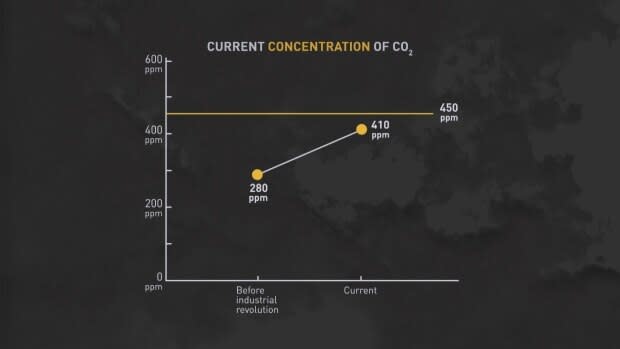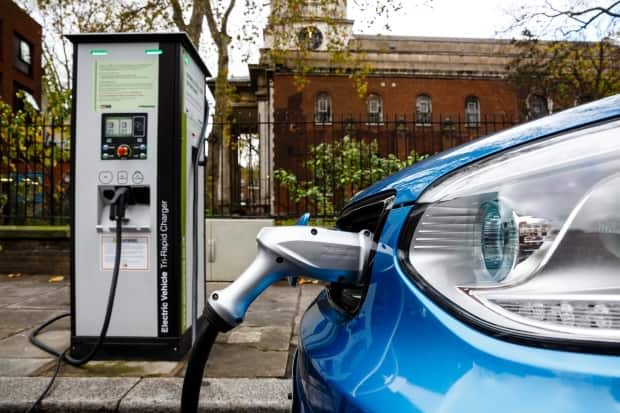The path to net-zero emissions won't be easy, but here's how it can be done

When you hear about climate change you might think it is a good idea to lower our greenhouse gas emissions. But did you know that to stop temperatures from continually increasing, we need to stop emitting greenhouse gas emissions altogether?
So why is that the case?
Climate change is like a bathtub. The concentration of carbon dioxide (and other heat-trapping gases) in our atmosphere is like the level of water in the tub. Annual greenhouse gas emissions are like the flow of water from the bathtub tap. Every year we increase the water level by burning coal, natural gas, gasoline and diesel, which releases greenhouse gases like CO2.
Those greenhouse gases trap heat. Like a greenhouse, they allow sunlight through, but block heat from radiating back out to space. The higher the level of CO2 in the atmosphere (water in the tub), the more heat is trapped.
The result is rising global average temperatures, more powerful extreme weather events like hurricanes and floods, rising sea levels, species loss and increasing threats to the stability of human civilization.
Watch an illustration of why Brett Dolter says we must get to net-zero emissions to prevent global warming:
The current concentration of CO2 in the atmosphere is about 410 parts per million (ppm). Before the industrial revolution began, the concentration was at 280 ppm.
If we are to stand a good chance of keeping the global average temperature increase below 2 C, we need to keep the concentration of CO2 below 450 ppm. There is not a lot of room left in the bathtub.
Simply reducing our greenhouse gas emissions won't stop climate change.
Think again of the example of a bathtub. The level of water in the bathtub will keep rising as long as the stopper is in place and the tap is turned on. Even a steady drip of water will increase the level in the tub over time.
We need to turn off the tap completely.
Letting water out of the tub
In other words, to meet the 2 C target, we need to reach net-zero CO2 emissions by mid-century, but that doesn't mean we have to immediately eliminate any emissions whatsoever.
We can also look at ways to loosen the stopper — and let water out of the tub — by removing CO2 from the atmosphere.
We can use natural processes like converting cropland to perennial grassland or replanting forests. Companies like Carbon Engineering are also creating technologies that can extract CO2 from the atmosphere.
If the tub gets too full, we may need to use these technologies to let some water out.
In the end, getting to net-zero by mid-century will likely mean both getting to zero emissions in the energy and industrial systems, and also removing CO2 from the atmosphere. But the quicker we can reduce our emissions, the less we'll have to rely on CO2 removal.

So how do we do it?
It won't be easy, but several studies now agree on the actions we need to take:
1) Use less energy
Energy efficiency is sometimes called "the first fuel." Before we worry about using clean energy, we can work to use less energy.
For individuals, this means adding insulation to our homes or repairing drafty windows.
For industry, it may mean buying energy-efficient equipment.
For cities, it means building walkable neighbourhoods where people can get to work, school and grocery stores without using their cars.
2) Clean up electricity
Burning coal and natural gas releases carbon dioxide. In Saskatchewan, the electricity sector is responsible for about 20 per cent of our annual greenhouse gas emissions.
To get to zero emissions, we need to use 100 per cent clean electricity.
There are two ways we might get there. Some argue we can use 100 per cent renewable energy to meet our electricity needs. Saskatchewan is blessed with the best wind and solar resources in Canada.
Others believe we'll also need to build nuclear reactors. Saskatchewan produces uranium.
While there is a debate on which path to take, there is no debate about the goal. We must eliminate greenhouse gas emissions from electricity production to stop climate change.
3) Electrify everything possible

Once we can generate electricity without producing greenhouse gas emissions, we can use that clean energy to power our cars, heat our buildings and provide industry with heat and power.
Electric vehicles are already cheaper to operate than gasoline or diesel vehicles. Gasoline would have to be below 50 cents a litre in order for combustion engines to compete with electric vehicles on operating cost.
Ground-source heat pumps could allow electricity to heat our buildings and provide heat to industry. Imagine a future where Saskatchewan produces zero-emissions potash, thanks to electric mines using electric heat.
4) Use zero emissions fuels for freight and air travel
Batteries are heavy, so electric vehicles may not be the best choice for long-distance freight hauling and air travel. These industries need fuels with a high energy density, meaning they contain a lot of energy per unit of weight.
Here we can look to biodiesel and hydrogen. Hydrogen can be created using electricity to split water (H2O) into Hydrogen and Oxygen. This provides a zero-emissions fuel that is energy dense and produces only water as a by-product when it is used.
5) Help industry get to zero emissions
Some industries generate greenhouse gas emissions like CO2 in their production processes. For example, half of the emissions in the cement industry come from turning limestone into calcium oxide, or clinker.
These CO2 emissions are inevitable if we want to use cement.
The same kind of "process emissions" are released in the steel industry.
We will still need cement and steel in our zero-emissions economy of the future, so how do we produce these products without releasing CO2?

In cases like these, the carbon capture and storage (CCS) technology that SaskPower has developed at Boundary Dam 3 will likely be necessary. CO2 emissions from cement and steel production can be captured and stored deep underground.
The technology is proven to work to capture emissions from coal-fired power. Its best use might be in hard-to-clean-up industries like steel and cement.
How do we get people and industry to take these actions?
The actions listed above are not free. If they were, we would already have taken them.
If we are going to motivate individuals, businesses and large industry to take these actions, we need the support of government policy.
Garrett Hardin described the solution to problems like climate change as "mutual coercion, mutually agreed upon." That's a pretty good definition of policy.
If we can agree as a province that we want to get to zero emissions by mid-century, then I hope we will also support governments putting in place policies to encourage us to get there.
Which policies are best?
There are five main approaches government can use:
1) Information
If we are going to act on climate change, we need good information on the nature of the problem and the solutions available to us, but information alone is not enough to motivate action.
Government has provided information about climate change for the past 25 years, but greenhouse gas emissions continue to go up. Talk is cheap and not very effective at motivating action.
We need to start asking whether we are building for 2019 or for 2050. - Brett Dolter
2) Incentives
We can pay people and companies to take action.
We can provide rebates when people buy electric vehicles, for example. We can provide low-interest loans for people to put more insulation in their homes.
Incentive programs are often popular because people feel like they are getting rewarded for doing the right thing. The trouble is, they are also expensive. Incentives often end up being paid to people who would have bought an electric vehicle anyway, or who were already planning to install more insulation. These people may be happy to receive free money, but that money has to come from somewhere and may not encourage a whole lot of additional action.
3) Regulation
We can put in place laws that require certain actions be taken, or that certain emission reduction targets be met.
This policy approach has the benefit of being effective. People and companies must obey the regulations or risk heavy fines or jail time.
However, while regulations may appear to be costless to government, meeting them can increase costs for businesses. These extra costs get passed on to customers. This means regulations are not free, but their costs are often hidden.
To reduce these costs, economists typically recommend that regulations be made flexible, requiring a desired outcome such as lower emissions per unit of electricity, rather than requiring that a certain technology be adopted.

4) Carbon pricing
We can put a price on pollution.
British Columbia did so in 2007 with a provincial carbon tax. That policy reduced greenhouse gas emissions by 5 to 15 per cent below what they would have been otherwise.
In Saskatchewan, the federal government has placed a carbon tax on fuels like gasoline, natural gas and coal. In the short-term, people and businesses may not be able to avoid paying the tax, but in the medium-term people can buy vehicles that use less gasoline or no gasoline at all. Businesses can also invest in energy-efficient equipment and zero-emissions processes.
Over the long-run, entrepreneurs are motivated to invent new zero-emissions products to help people avoid paying the tax.
Carbon pricing can be criticized for increasing fuel costs, but that is only half of the picture. It also raises revenues.
The federal carbon pricing system uses the revenues to provide rebates to households in Saskatchewan. These rebates mean that 80 per cent of households receive more money from the rebates than they pay in carbon pricing. If the Saskatchewan government wanted to, it could use carbon pricing revenues for other purposes, like paying off the debt, lowering the PST or increasing the Saskatchewan Low-Income Tax Credit.
You might wonder how carbon pricing can work if we give the money back. I previously explored that question in this article.
5) Direct investment
The last policy option is for government to directly invest in zero-emissions technologies.
Direct investment can provide infrastructure such as power transmission lines that would be too risky or too costly for the private sector to finance and build.

The Saskatchewan and Canadian governments could agree to finance and build a new transmission line between Manitoba and Saskatchewan to increase the use of renewable energy. Saskatchewan's low-cost wind energy needs a backup, and Manitoba's hydroelectric reservoirs can provide it.
The key challenge here is ensuring that government makes investments that create a net benefit to society.
We can get to net-zero
The technologies exist to get us to net-zero emissions by mid-century. There are effective policies like flexible regulation and carbon pricing that can encourage us to adopt those technologies, but we need to start investing in zero-emissions today.
Whether it's our homes, our power plants or our industrial processes, we need to start asking whether we are building for 2019 or for 2050. If we are going to put a stop to climate change, then we need to change our policies and our investments today.
This column is part of CBC's Opinion section. For more information about this section, please read this editor's blog and our FAQ.
Interested in writing for us? We accept pitches for opinion and point-of-view pieces from Saskatchewan residents who want to share their thoughts on the news of the day, issues affecting their community or who have a compelling personal story to share. No need to be a professional writer!
Read more about what we're looking for here, then email sask-opinion-grp@cbc.ca with your idea.


